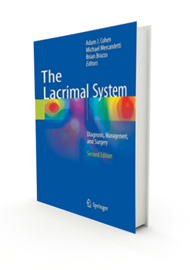The lacrimal drainage apparatus is an intricate conduit, the function of which depends on a complex interplay of its morphology and physiology. This book enhances our understanding of the disorders of the nasolacrimal system, their diagnosis, management and the surgical procedures pertaining to it. It is written by experts in this specialised area, who share their knowledge and practical experience with others.
The initial chapters describe the anatomy, embryology, osteology and physiology of the nasolacrimal system, nasal passages and paranasal sinuses. This is followed by a chapter on evidence based account of gender and racial variation in the morphology of the nasolacrimal system. Awareness of these nuances and appropriate adjustment in surgical techniques to address differences may lead to better surgical outcomes and improved patient satisfaction.
Congenital and acquired pathologies of the system, i.e. abnormalities of puncta, supernumerary ducts (Anlage), atresia or absence of canalicular system, are next discussed. This is followed by a discussion of acquired, secondary, iatrogenic, medically and radiologically induced aetiologies of lacrimal system obstruction. Tear pump function is explained and dysfunction because of lid malpositioning due to trauma, cicatrisation, facial palsy, botox, etc. is discussed. This is followed by clinical evaluation, imaging techniques, and interpretation of diagnostic tests used in nasolacrimal obstruction. The last few chapters concentrate on surgical procedures.
Conventional procedures of external, endo-nasal and trans-canalicular dacryocystorhinostomy (DCR) are well described and then the authors move on to the cutting edge technology and innovations of balloon dacryoplasty, conjunctivo- DCR, radiofrequency DCR, catheterisation, stents and trephining of the nasolacrimal system. The layout is clear and the text is complemented by high quality cadaveric images, illustrations, diagrams, and tables to clarify concepts. This book could be a valuable library resource and serve as a useful reference for oculoplastic trainees, fellows, surgeons and lacrimal specialists.





